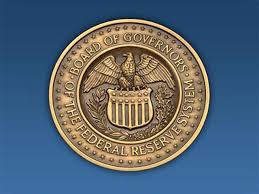
In a decision long anticipated by markets, the Federal Reserve opted to maintain its benchmark interest rate at 4.25–4.50 percent, even as its updated policy projections penciled in two quarter‑point cuts by the end of 2025. Chair Jerome Powell emphasized that the Fed’s path remains “data‑dependent,” warning against reading too much into the quarterly forecasts. The move reflects a judgement that, while underlying inflation has eased from recent peaks, looming import tariffs and signs of economic softening warrant keeping the door open for eventual rate relief.
Tariff‑Driven Inflation Concerns Delay Cuts
Fed officials have repeatedly underscored the impact that planned U.S. import duties could have on consumer prices. Although core inflation measures have moderated closer to the Fed’s 2 percent target, tariffs on steel, aluminum and a broad array of consumer goods threaten to reignite price pressures once fully implemented. The Fed’s own projections assume a moderate uptick in inflation later this year as businesses pass through higher import costs, but Powell cautioned that actual pass‑through rates remain uncertain. That uncertainty has tilted the balance toward maintaining restrictive policy until the inflationary effects of tariffs are clear in the data.
Behind the scenes, manufacturers, wholesalers and retailers have engaged in intense negotiations over who will absorb these added costs. While some importers have hinted at limited price concessions, most industry executives expect at least a portion of the tariff burden to fall on end consumers. The Fed’s decision to signal cuts without immediately lowering rates allows it to guard against a potentially abrupt resurgence in inflation—particularly in goods prices—while preserving the option to ease if tariff‑induced shocks prove milder than feared.
Economic Slowdown Spurs Outlook Shift
Beyond tariff uncertainties, fresh data have painted a picture of a slowing economy. The Fed’s updated forecasts foresee real GDP growth decelerating to just 1.4 percent in 2025—down from 1.7 percent in March—and unemployment rising to 4.5 percent by year‑end. Business investment surveys indicate that companies are scaling back capital expenditure plans, citing tighter credit conditions and weaker demand. Consumer sentiment has slipped as higher borrowing costs and stretched household budgets weigh on confidence.
Against this backdrop, Fed officials judged that signaling future rate cuts could help anchor expectations and support economic activity, even if actual easing remains contingent on stronger evidence of cooling inflation and labor‑market slack. The dot plot’s indication of two quarter‑point cuts offers reassurance to markets and businesses that, should growth falter further, policy will adjust accordingly. At the same time, the unanimous decision to hold rates steady underscores the committee’s caution: with inflation still running above target and the labour market only recently showing signs of loosening, premature cuts could risk reigniting price pressures.
Balancing Data Dependence with Market Expectations
The Fed’s public communications reflect a delicate balancing act. On one hand, the dot plot serves as forward guidance, helping shape market expectations around future rate moves. On the other, Powell stressed that these projections carry “low conviction” and are subject to change with new information. Indeed, the June policy statement highlighted that rate‑cut timing will depend on incoming data—particularly on inflation trends after tariff implementation, wage developments and evidence of sustained economic slowdown.
Financial markets reacted by modestly lowering near‑term rate‑cut probabilities, with traders now assigning roughly a 60 percent chance to a September rate reduction and pricing in two cuts by December 2025. Treasury yields steepened slightly on expectations of easier policy ahead, while equity markets ticked higher on the prospect of lower financing costs. Yet analysts caution that markets may be underestimating the Fed’s resolve to maintain restrictive policy if inflation fails to decelerate as projected.
Looking forward, the Fed’s next major inflection points will include the release of third‑quarter CPI data, new readings on import‑price inflation that capture the impact of tariffs, and surveys of business‑investment intentions. A smaller‑than‑expected rise in consumer prices would bolster the case for an early move to cut rates. Conversely, if core inflation remains stubbornly above target or if the labour market holds near tight conditions, officials may elect to delay easing until well into 2026.
By combining a steady policy rate today with conditional guidance for cuts tomorrow, the Fed seeks to navigate between the twin imperatives of taming inflation and sustaining growth. In this era of heightened geopolitical uncertainty and shifting trade policies, that patient, data‑driven approach represents the central bank’s strategy for achieving its dual mandate of price stability and maximum sustainable employment.
(Source:www.cnbc.com)
Tariff‑Driven Inflation Concerns Delay Cuts
Fed officials have repeatedly underscored the impact that planned U.S. import duties could have on consumer prices. Although core inflation measures have moderated closer to the Fed’s 2 percent target, tariffs on steel, aluminum and a broad array of consumer goods threaten to reignite price pressures once fully implemented. The Fed’s own projections assume a moderate uptick in inflation later this year as businesses pass through higher import costs, but Powell cautioned that actual pass‑through rates remain uncertain. That uncertainty has tilted the balance toward maintaining restrictive policy until the inflationary effects of tariffs are clear in the data.
Behind the scenes, manufacturers, wholesalers and retailers have engaged in intense negotiations over who will absorb these added costs. While some importers have hinted at limited price concessions, most industry executives expect at least a portion of the tariff burden to fall on end consumers. The Fed’s decision to signal cuts without immediately lowering rates allows it to guard against a potentially abrupt resurgence in inflation—particularly in goods prices—while preserving the option to ease if tariff‑induced shocks prove milder than feared.
Economic Slowdown Spurs Outlook Shift
Beyond tariff uncertainties, fresh data have painted a picture of a slowing economy. The Fed’s updated forecasts foresee real GDP growth decelerating to just 1.4 percent in 2025—down from 1.7 percent in March—and unemployment rising to 4.5 percent by year‑end. Business investment surveys indicate that companies are scaling back capital expenditure plans, citing tighter credit conditions and weaker demand. Consumer sentiment has slipped as higher borrowing costs and stretched household budgets weigh on confidence.
Against this backdrop, Fed officials judged that signaling future rate cuts could help anchor expectations and support economic activity, even if actual easing remains contingent on stronger evidence of cooling inflation and labor‑market slack. The dot plot’s indication of two quarter‑point cuts offers reassurance to markets and businesses that, should growth falter further, policy will adjust accordingly. At the same time, the unanimous decision to hold rates steady underscores the committee’s caution: with inflation still running above target and the labour market only recently showing signs of loosening, premature cuts could risk reigniting price pressures.
Balancing Data Dependence with Market Expectations
The Fed’s public communications reflect a delicate balancing act. On one hand, the dot plot serves as forward guidance, helping shape market expectations around future rate moves. On the other, Powell stressed that these projections carry “low conviction” and are subject to change with new information. Indeed, the June policy statement highlighted that rate‑cut timing will depend on incoming data—particularly on inflation trends after tariff implementation, wage developments and evidence of sustained economic slowdown.
Financial markets reacted by modestly lowering near‑term rate‑cut probabilities, with traders now assigning roughly a 60 percent chance to a September rate reduction and pricing in two cuts by December 2025. Treasury yields steepened slightly on expectations of easier policy ahead, while equity markets ticked higher on the prospect of lower financing costs. Yet analysts caution that markets may be underestimating the Fed’s resolve to maintain restrictive policy if inflation fails to decelerate as projected.
Looking forward, the Fed’s next major inflection points will include the release of third‑quarter CPI data, new readings on import‑price inflation that capture the impact of tariffs, and surveys of business‑investment intentions. A smaller‑than‑expected rise in consumer prices would bolster the case for an early move to cut rates. Conversely, if core inflation remains stubbornly above target or if the labour market holds near tight conditions, officials may elect to delay easing until well into 2026.
By combining a steady policy rate today with conditional guidance for cuts tomorrow, the Fed seeks to navigate between the twin imperatives of taming inflation and sustaining growth. In this era of heightened geopolitical uncertainty and shifting trade policies, that patient, data‑driven approach represents the central bank’s strategy for achieving its dual mandate of price stability and maximum sustainable employment.
(Source:www.cnbc.com)





